How To Change Front Brake Pads On Harley Davidson Sportster
Introduction
This guide volition prove you how to remove the former front brake pads so install new ones.
Brake pads should be inverse at the owner's discretion. Most restriction pads will make a squeaking or scraping noise when they are budgeted the cease of their life.
-
-
For the best access to the restriction pads, nosotros recommend securing the motorcycle in an upright position.
-
If you exercise not have a motorcycle lift, you will still be able modify the restriction pads, just it is still a good idea to secure the front wheel in place.
-
-
-
Hang the caliper on a metal hanger attached to the handlebars or headlights.
-
-
-
Using a 1/4" hex head or allen wrench, unscrew the two bolts holding the front end brake assembly to the fork.
-
Unscrew and remove the bottom commodities, but exercise not completely remove the top bolt nevertheless.
-
-
-
Supporting the restriction associates with one hand, remove the acme bolt.
-
Carefully slide the brake off of the brake rotor and hang it from the metallic hanger.
-
-
-
Using a 5/16 wrench, remove the bolt holding the stationary restriction pad cover in place.
-
Remove the stationary brake pad comprehend from the restriction associates.
-
-
-
Being careful to not allow any loose parts fall out of the brake assembly, remove the stationary brake pad from the front brake assembly.
-
-
-
Remove the floating caliper and remaining restriction pad from the caliper associates.
-
-
-
Using a tin can of brake cleaner, spray out the piston and within of the restriction caliper.
-
-
-
Using a Phillips #2 screwdriver, remove the ii screws securing the comprehend on the principal brake-fluid reservoir.
-
Carefully remove the encompass of the master reservoir, making sure that you do not spill any of the brake fluid.
-
-
-
Position the screw of a large C clamp so that the head of the screw is pressing against the within of the brake piston.
-
It is possible to use your hands rather than a C clamp, but it is much more difficult.
-
Slowly tighten the C clench, forcing the brake piston back into the restriction cylinder until information technology is completely depressed.
-
-
-
To forestall spilling any brake fluid, first clean the surface area around the master cylinder with a clean rag, and then replace the comprehend.
-
-
-
Inspect the new restriction pads for fries or other signs of clothing.
-
Employ a moderate corporeality of anti-squeal compound to the dorsum of each new brake pad.
-
-
-
Using your fingers, pull the alignment peg out of its hole in the stationary caliper.
-
Apply a thin layer of grease to the alignment peg.
-
Re-install the alignment peg, but practise not push it all the style in. Merely push it in virtually half-mode.
-
-
-
The jump should be on the same side every bit the alignment peg.
-
Place one of the brake pads into the floating caliper, with the anti-squeal side facing away from the spring and mount peg.
-
-
-
Holding the brake assembly in one hand and the floating caliper in the other, gently slide the floating caliper into the forepart brake associates.
-
Move the floating caliper alignment peg so that the metallic tab on the floating caliper fits together with the indentation on the alignment peg.
-
-
-
Being careful to not dislodge the floating caliper, insert the stationary brake pad then that the tab on the brake pad fits into the corresponding slot on the stationary caliper.
-
-
-
Using ane hand to keep the restriction pads from falling out, replace the cover on the stationary brake pad.
-
Insert the spiral and lock washer that came with the brake pads and tighten using a Phillips #2 screwdriver.
-
-
-
With the piston on the outside of the rotor, carefully slide the forepart brake assembly back over the rotor
-
Slide the brake assembly until the lower hole in the restriction associates aligns with the lower mount hole on the fork.
-
-
-
Employ a small amount of grease on the lower restriction mount screw.
-
Insert the screw into the lower mount hole.
-
-
-
Insert the upper retaining bolt into the upper bolt hole in the fork and brake assembly.
-
Using only your hands, tighten the commodities as much as possible.
-
-
-
Using a torque wrench, tighten both screws to betwixt 25 and 30 pes-pounds.
-
Determination
Before taking the motorbike up to total speed on the open road, test that the brakes work by starting and stopping at low speeds in an empty street or parking lot.
Embed this guide
Choose a size and re-create the code below to embed this guide equally a small widget on your site / forum.
Preview
Source: https://www.ifixit.com/Guide/Harley-Davidson+Sportster+Evolution+Front+Brake+Pads+Replacement/6302
Posted by: bartleytheds1985.blogspot.com











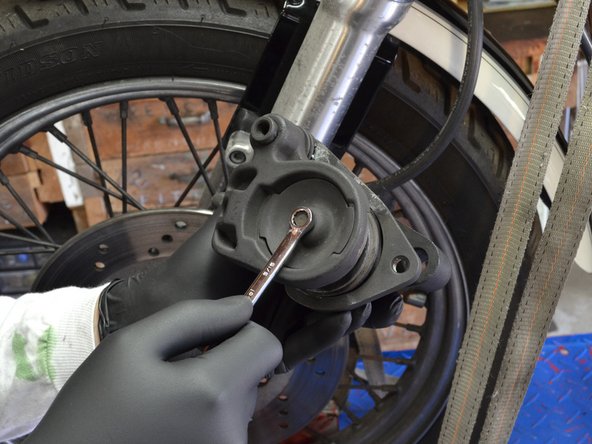
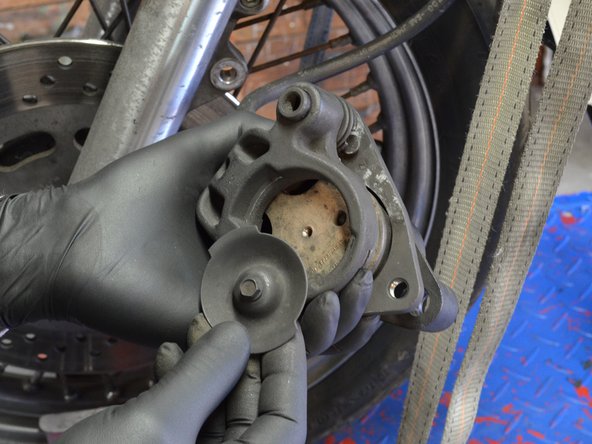








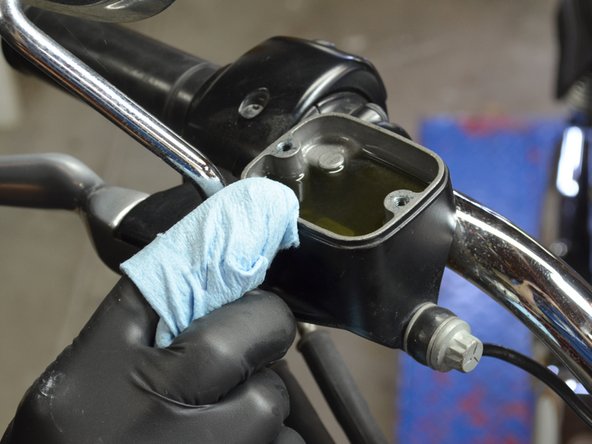










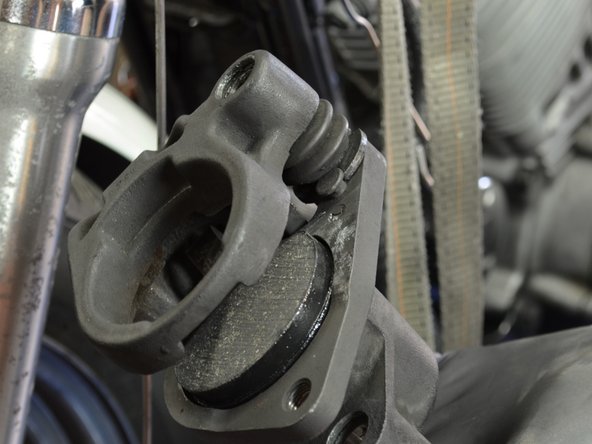
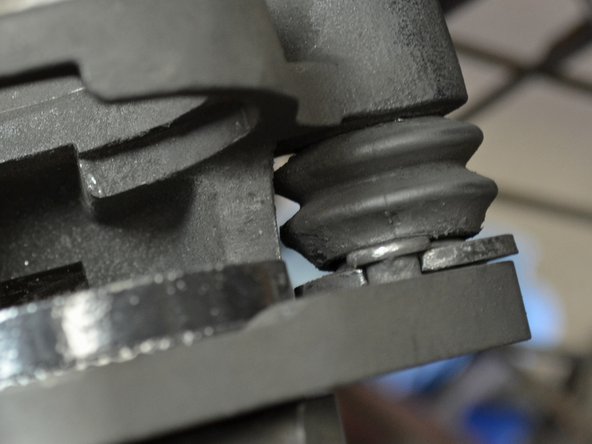















0 Response to "How To Change Front Brake Pads On Harley Davidson Sportster"
Post a Comment